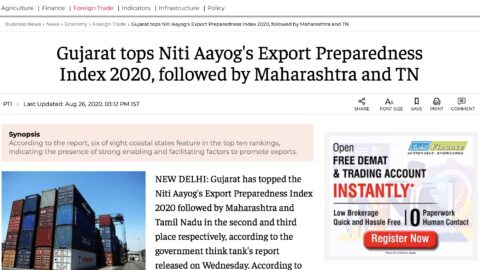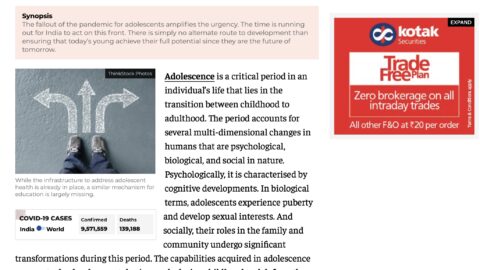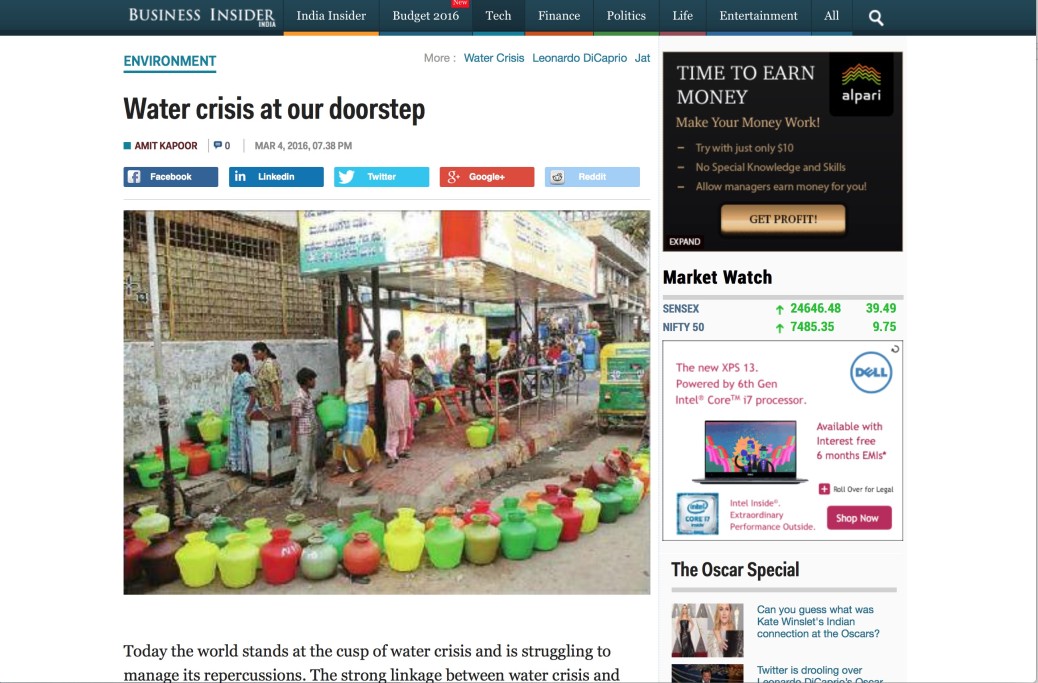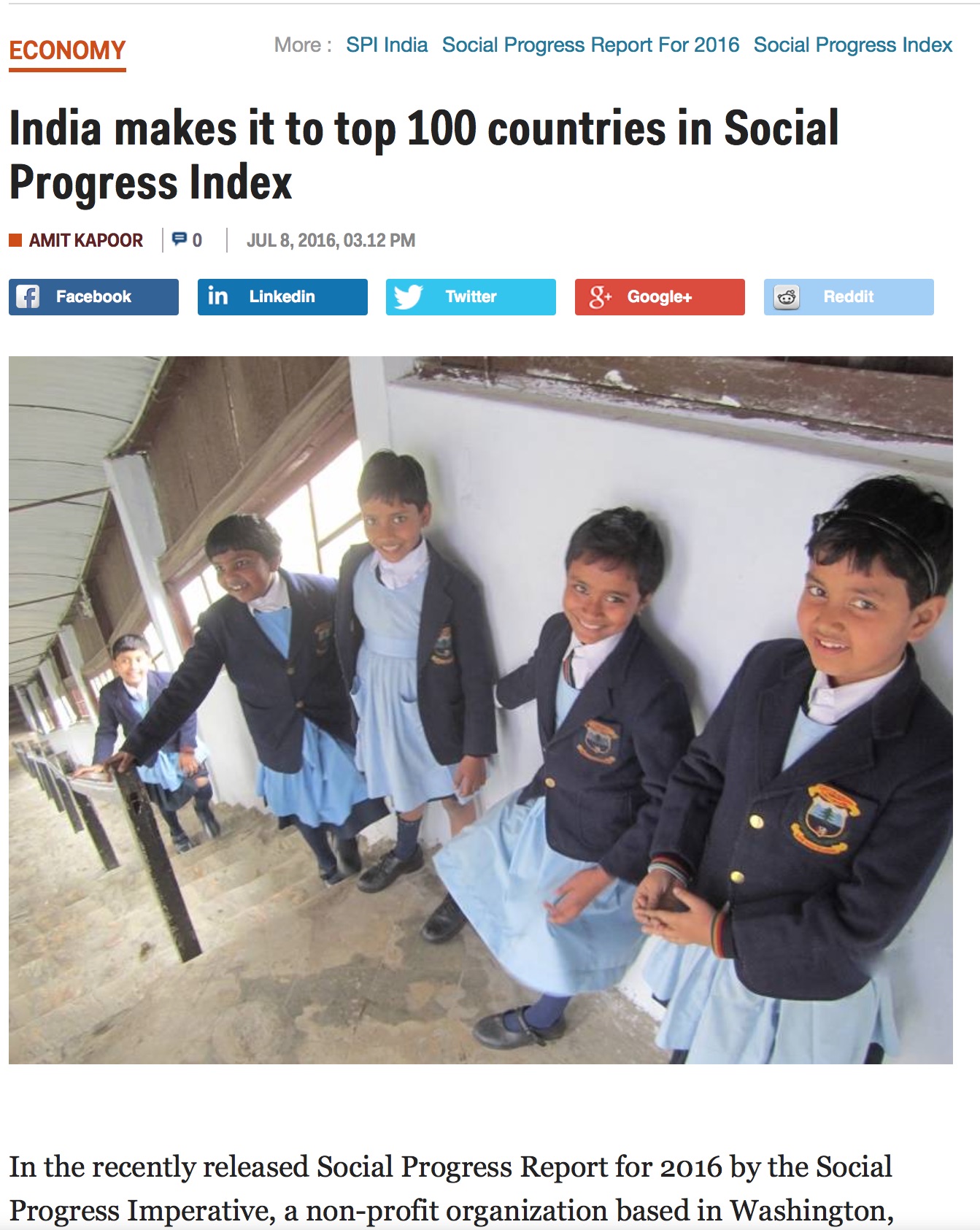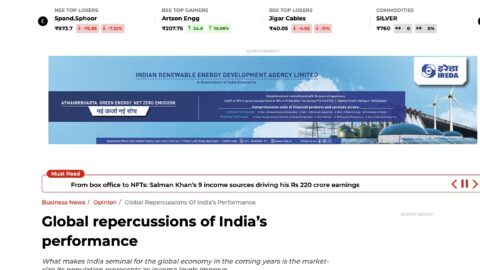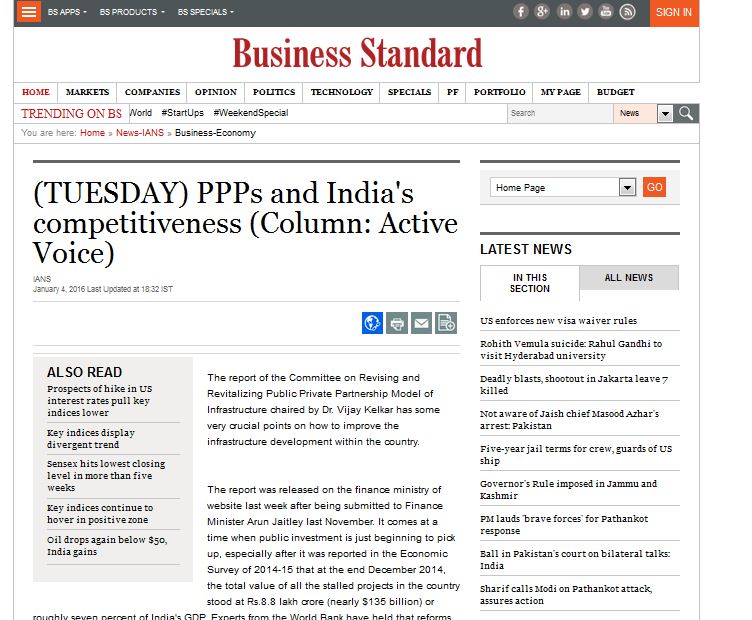By Amit Kapoor & Meenakshi Ajith
The transition to renewable energy has been the hallmark of India’s approach to tackling climate change in the last decade. Till 2022–23, India’s primary energy mix favored fossil fuels, with 84% of it coming from coal, oil, and natural gas. However, with the introduction of renewables, the composition of India’s power mix changed significantly, with the share of non-fossil power capacity being 45.4% as of May 2024. India added 13.5 GW of renewable energy capacity in 2023 alone, ranking 4th globally in installed renewable energy capacity, 4th in wind power capacity, and 5th in solar power capacity. By 2070, India is seeking to triple its’ renewable energy capacity from its current 170 GW to 500 GW—an ambitious and yet critical target. This transition entails significant costs, not just in terms of capital investments but also in terms of technology, jobs, and other socio-economic aspects. India’s economic survey this year acknowledged that the price of the energy transition will be too much for most nations, only to get worse going forward. At the same time, the transition also brings significant opportunities beyond cost savings and environmental improvements. What are the costs of transitioning to this cleaner future, and how does it fit in with India’s balanced approach to economic growth and building climate resilience?
India is one of the fastest-growing economies, poised to become the third largest in the world, and yet our per capita income, a key indicator of economic prosperity, remains much lower compared to other developing bloc peers. This points to abundant and incremental growth potential in the future, leading to an increased demand for electricity as well as materials such as cement and steel. The Energy Outlook published by the IEA estimates that over the next 3 years, India will add electricity demand roughly equivalent to the current consumption of the entire United Kingdom. So, as we discuss the costs of transition, there are two dimensions to consider: social and economic, and varying timeframes: short-term, mid-term, and long-term.
In the period between 2014 and 2023, India’s clean energy sector received investments of ₹8.5 lakh crore (USD 102.4 billion), and the investments are set to reach 30.5 lakh crore between 2024 and 2030 (367.47 billion USD). Even though clean energy investments are on track, they would still need to increase by at least 20% to get fully on track for the country’s energy and climate goals to double renewables by 2030. For them to be tripled by 2070, they should rise even further. Given the size of the funds needed, we must harness capital from advanced economies, and DFIs will remain important. Currently, investments in India come primarily from domestic lenders. To further scale up investment from all sources, India should consider incorporating transition financing tools, which are emerging as a promising way to channel more capital into high-emission sectors. We also need scientific, complementary, and standardized roadmaps across sectors (industry, agriculture, transport, etc.) to enhance the effectiveness of the investments.
‘Just’ energy transitions have become the chorus of all discussions on the future of clean energy. A significant portion of the population still heavily depends on coal mining and its associated value chain activities for their livelihood. The transition to clean energy will inevitably change the occupational structure in the energy sector. While it creates more opportunities for green jobs, the Indian green job market may not have enough takers with relevant skills. It is therefore critical that we tap into this opportunity. In 2015, India established the Skill Council for Green Jobs. Through a range of activities and services, such as performing skills gap analysis, occupational mapping, and developing qualification packs based on industry requirements, the council seeks to spread its activities across the gamut of green industries in the country. Nevertheless, green jobs in India face the challenge of profitability. Currently, easy-to-enter green jobs primarily revolve around activities in agro-forestry, fisheries, and similar sectors that are not particularly lucrative. Therefore, it is crucial to facilitate the requisite investment and engagement with educational institutions. This year, the PM-Surya Ghar Yojana was launched with a total outlay of ₹75,021 crore to add 30 GW of solar capacity and reduce 720 million metric tons of CO2 equivalent, creating around 17 lakh direct jobs across the solar value chain. To match workers with employment opportunities in the new economy, India requires more detailed skills data and capacity building. Training the youth in sustainable energy and allied disciplines is also essential if we are to produce a resilient workforce in the future.
Ultimately, the country must balance its long-term, mid-term, and short-term objectives. The transition pathway presents equal challenges and opportunities. In the short term, India can only aspire to phase down, if not phase out, fossil fuels. In contrast to the decline in fossil fuel investments in advanced economies, India saw a 5% increase in investment in 2023 and anticipates a nearly 10% expansion to approximately USD 15 billion by 2024. We therefore need long-term concessional financing from all sources beyond the domestic market. A recent study by the Potsdam Institute for Climate Impact Research (PIK) suggests that countries with limited renewable energy resources can achieve significant cost savings by relocating energy-intensive production to regions with cheaper renewable energy. For India, which is actively expanding its renewable energy sector, this global trend has implications. By focusing on producing renewable energy and exporting it as part of a broader industrial strategy, India could leverage its renewable resources to attract investment and reduce domestic production costs. Furthermore, to harness value chain opportunities, India should also tackle China’s near monopoly over the production and processing of critical and rare earth minerals, which is likely to have repercussions for our renewable energy program.
With its unwavering commitment to a clean future and enthusiastic pursuit of diversified clean fuels like green hydrogen, India is on the right track. We face immediate challenges in terms of scale and addressing socioeconomic impacts on dependent communities. Our long-term vision necessitates a sustained capital influx and technological innovation. Only with a clear and comprehensive roadmap across sectors that encompasses the social and economic dimensions of these transitions can India achieve resilient and prosperous growth.
The article was published with Business World.



